An observational study on predicting endometriosis recurrence risk.
Endometriosis presents in various ways, and improper management can lead to recurrence. Studies show that the recurrence rate can range from 6% to 67%. Factors that may increase this risk include having severe or deep forms of the disease, being…
Key Points Lay SummaryPost Surgery Endometrioma Recurrence
Endometrioma is a common form of endometriosis. Endometrioma cystectomy is the preferred treatment, as it is more effective than ablation or laser vaporization in reducing pain and recurrence. While medical treatment can help prevent recurrence after surgery, postoperative hormonal therapy…
Key Points Lay SummaryProgrammed Cell Death 1 Ligand Expression and Endometrioma Recurrence
Although there are several medical and surgical management options, endometriosis is highly prone to recurrence. A possible predictor of recurrence would be the quality of life for women with endometriosis. On the other hand, endometriosis is an immunological disease, there…
Key Points Lay SummaryThe type of surgical approach compared to complications and recurrence for colorectal endometriosis
Women with endometriosis may have extension and infiltration of the intestine, called "colorectal endometriosis, in up to 12%. The main symptoms are alterations in bowel habits, pelvic pain, and/or infertility. The gold standard management option for colorectal endometriosis is surgical…
Key Points Lay SummaryNo increased risk of major postoperative complications in women operated by experienced surgeons in endometriosis centers
Recurrent surgery may be needed in up to 35% of endometriosis patients. The reason for repeated surgery may be residual or recurrent disease. In other words, multiple surgical procedures are a common phenomenon for women having endometriosis. Knowing the impact…
Key Points Lay SummaryDienogest versus combined oral contraceptives treatment in postoperative endometriosis care
Dienogest is a synthetic progestin derivative, like oral contraceptives, used to prevent endometriosis recurrence after surgery. Randomized clinical trials verified a significantly higher reduction in endometriotic lesions, clinical symptoms, and improved quality of life obtained when dienogest was given to…
Key Points Lay SummaryMenopause-management strategies for women with endometriosis.
Menopausal hormonal therapy is the most effective treatment for menopausal symptoms, such as hot flushes, sweating, sleep disturbances, mood changes, and joint pain. Approximately 75% of all women experienced some degree of these symptoms, while 2-4% were diagnosed with endometriosis. Menopausal…
Key Points Lay SummaryTaller Girls More Likely to Have Recurring Endometriosis
Adolescents who are taller and have three or more lesions are at a higher risk of endometriosis recurrence following surgery, according to a new study by Chinese researchers published in the Journal of Obstetrics and Gynaecology. They should, therefore, be…
Key Points Lay SummaryStudy Identifies Factors Associated With Risk of UrinaryTract Endometriosis Recurrence
Being younger than age 25 and having an autoimmune disease are significant predictors of the recurrence of urinary tract endometriosis after surgery according to a new study published in the Journal of Minimally Invasive Gynecology. Adjuvant hormonal therapy, on the…
Key Points Lay SummaryEndometriotic cyst fluid and the postoperative recurrence of endometriosis
Dr. Xinxin Xu and colleagues from the Department of Obstetrics and Gynecology, School of Medicine, Zhejiang University, China, published their research on the viability of endometrial cells in ovarian cyst fluids in a recent issue of “Journal of Ovarian Research”.…
Key Points Lay SummaryThe effect of postoperative hormonal medication preferences on the recurrence rate of endometrioma
Endometrioma is the most investigated type of endometriosis. The recurrence after surgery is important regarding its and reoperation’s effect on ovarian functions. In the study conducted by Seung-Hye Choi et al, the researchers questioned the effect of different postoperative hormonal…
Key Points Lay SummaryPostoperative outcomes of deep intestinal endometriosis surgery.
Invasion of endometriotic lesions to the bowels' mucosal and/or muscular levels is called intestinal deep endometriosis. These lesions are most frequently found in the rectosigmoid colon, followed by the rectum, ileum, appendix, and caecum. The optimal surgical approach to intestinal deep…
Key Points Lay SummaryAbdominal wall endometriosis is not a rare disease as supposed
Abdominal wall endometriosis is an iatrogenic type of endometriosis defined as the localization of endometrial glandular and stromal tissue on the abdominal wall including skin, the rectus abdominis muscle, and rectus muscle sheath. Cyclical pain, mass located on the abdominal…
Key Points Lay SummaryA novel contribution to patient management in endometriosis by immunohistochemistry
Dr. Tarumi and associates from the Kyoto Prefectural University of Medicine, Kyoto, Japan published their retrospective cohort study on the importance of progesterone receptors on recurring ovarian endometriosis in "The Journal of Clinical Endocrinology & Metabolism". Surgery for endometriosis is…
Key Points Lay SummarySurgery for the Treatment of Endometriosis of the Diaphragm and Thorax
Diaphragmatic and thoracic endometriosis starts in the abdominal wall of the diaphragm and later invades the thorax, based on findings from a series of patients surgically treated for the disease, reports a study published in the Journal of Gynecology Obstetrics…
Key Points Lay SummaryIs breastfeeding beneficial to endometriosis pain?
Dr. Porta team from Italian academic centers have recently published their research in “International Journal of Environmental Research and Public Health” on breastfeeding mothers who were under follow-up for histologically proven endometriosis. The hormonal milieu is believed to have an important…
Key Points Lay SummaryThe effect of hormone therapy after surgical menopause on endometriosis recurrence
Definitive surgery for severe and advanced endometriosis is hysterectomy with bilateral oophorectomy, which may cause vasomotor symptoms, sleep deprivation, mood change, and dyspareunia in the patients. Furthermore, after the surgical removal of the ovaries, the sudden drop in estrogens causes…
Key Points Lay SummaryResearch Identifies New Genes That Could Be Targeted to Treat Endometriosis
Researchers identified three new genes that could help understand the invasiveness of endometriosis. They also identified one new gene that could be related to the recurrence of the disease. These genes may potentially be new therapeutic targets for endometriosis. In…
Key Points Lay SummaryEndometrioma post-surgical-recurrence risk factors
Jiang and associates from Dailan Medical University, China published their review manuscript “Risk factors for ovarian endometrioma recurrence following surgical excision: a systematic review and meta‑analysis” in the June 2021 issue of "Archives of Gynecology and Obstetrics". The most common form of endometriosis, "ovarian…
Key Points Lay SummaryLong noncoding RNAs to predict the endometriosis recurrence
Despite extensive research, the exact pathophysiologic mechanism of endometriosis remains unclear; and the absence of non-invasive biomarkers to diagnose endometriosis is still a big problem both for clinicians and patients. The recurrence of endometriosis is another challenge that is difficult…
Key Points Lay SummaryOutcomes of chronic pelvic pain of endometriosis after laparoscopic surgery
The prevalence of endometriosis is up to 35-50% among patients with pelvic pain. Among several medical and surgical options to relieve chronic pelvic pain, surgical options are the preferred method but this depends on patients' age, fertility desire, and disease…
Key Points Lay SummaryPostoperative treatment and pregnancy points to decreased recurrence risk for ovarian endometriosis
Endometriosis is a disease most frequently diagnosed in women of reproductive age and negatively affects the quality of life. The most common localization for endometriosis is ovaries with a prevalence of 17-44%. Laparoscopic ovarian cystectomy performed as excision or ablation…
Key Points Lay SummaryThe role of hormonal treatment after endometriosis surgery
Postoperative hormonal suppression after endometriosis surgery still does not have a uniform approach. The meta-analysis study conducted by Zakhari et al. aimed to find a significant answer regarding this burden. They analyzed the database systems including MEDLINE, Embase, Cochrane CENTRAL,…
Key Points Lay SummaryThe recurrence risk of endometrioma in older age
Ovarian endometrioma is more common in reproductive ages and the recurrence rate is around 20 percent in the first 2 years after the initial surgery. The use of postoperative hormonal therapy is a mutual option to decrease recurrences. The rate…
Key Points Lay SummaryHormone Therapy Before Endometriosis Surgery
Hormonal therapy can be effective for endometriosis, although laparoscopic surgery is required for the frequent drug-resistant symptoms. Laparoscopic surgery can markedly improve endometriosis-associated pain. The administration of GnRH agonist prior to endometriosis laparoscopic surgery may be beneficial to improve surgical…
Key Points Lay SummaryReproductive capacity and recurrence rate after surgery for Stage III/IV endometriosis
If gaining fertility back is the main goal, the surgical removal of endometriosis lesions is globally recognized as first-line therapy. Even though, pre- and postoperative hormone therapy leads to a significant decrease in the spread of the disease measured with the…
Key Points Lay SummaryClinical characteristics linked to recurrence of ovarian endometrioma
Endometriosis affects 10-15% of women. Three types of endometriosis are peritoneal, ovarian, and deep infiltrating endometriosis. Ovarian endometriosis is the most common type of endometriosis with a high rate of recurrence. Laparoscopy is the gold standard treatment for endometriosis and…
Key Points Lay SummaryRecurrence following surgery for subtypes of endometriosis
Endometriosis is a disease identified by the location of endometrial stromal and glandular cells outside the uterine cavity. It is considered as a gynecological disease of reproductive-aged women. Three subtypes of endometriosis are peritoneal endometriosis which defines the endometriotic lesions…
Key Points Lay SummaryRecurrent endometriosis is a real challenge both for the patients and clinicians
Endometriosis is defined as the localization of endometrial stromal and glandular cells outside the uterine cavity. Current medical and surgical treatment options have several limitations including the side effects, costs, risk of recurrence, effects on conception capability. Recurrence is a…
Key Points Lay SummaryFactors affecting risk of ovarian endometriosis malignancy
Getting married when older, having had ovarian endometriosis for longer, giving birth in a shorter time, and other complications in the uterus that are benign may all increase the risk of ovarian endometriosis malignancy. This is according to a study…
Key Points Lay SummaryA new technique for laparoscopic management of ovarian endometriosis.
To cause a minimal hazardous effect on ovarian reserve during laparoscopic surgery of endometriomas is always a great concern for clinicians. Shaltout et al. from Cairo University, Egypt, examined the effect of "Surgicel" on preventing the recurrence of endometriomas and…
Key Points Lay SummaryHow does pregnancy affect endometriosis?
Endometriosis is the localization of endometrial stromal and glandular cells outside the uterine cavity. Pregnancy is offered as a treatment option for patients with endometriosis because it causes atrophy of endometrial cells similar to progesterone treatment. Progesterone predominance during pregnancy,…
Key Points Lay SummaryPlasma Energy for Ovarian Endometriomas
There are many different approaches used in the management of ovarian endometriomas such as stripping cystectomy, ablation, including electrical/thermal and CO2 laser ablation, fenestration/aspiration, and combined techniques. Plasma energy is a new promising treatment option for ovarian endometrioma and may be…
Key Points Lay SummaryReducing the Risk of Recurrence After Endometriosis Surgery
The use of compounds called NF-κB inhibitors and β-blockers before and after endometriosis surgery may reduce the risk of the disease recurring, according to a study conducted in a mouse model. According to the study published in the journal Reproductive…
Key Points Lay SummaryOvarian stimulation regimes: Concerns on progression or recurrence of endometriosis
Somigliana et al., from the University of Milan, Italy, performed a literature review to predict the endometriosis-enhancing effect of ART regimes on infertile women and reported their results in Reproductive Biomedicine Online. Their points of interest were increasing dysmenorrhea, dyspareunia, non-menstrual pain and…
Key Points Lay SummaryPreoperative factors to predict unresponsiveness in women undergoing endometriosis surgery
Endometriosis is defined as the localization of endometrial glandular and stromal cells outside the uterine cavity. Despite extensive research, the optimal management of endometriosis still remains unclear. Several treatment options include analgesic medication, hormonal treatments, and surgical intervention. There is…
Key Points Lay SummaryThe appearance of postoperative endometriosis by imaging methods
Endometriosis is a chronic gynecological disease mostly encountered in reproductive-aged women. Endometriosis can occur in three different entities: peritoneal, ovarian and deep endometriosis. Golden standard diagnosis is made by histopathological examination of surgical material after laparoscopic surgery in women with…
Key Points Lay SummaryWhich comes first in endometriosis management: In vitro fertilization or surgery?
Endometriosis is defined as the localization of endometrial glandular and stromal tissue outside the uterine cavity. The prevalence is found to be 7%–10%, but among infertile women, it increases up to 50%. Early diagnosis and personalized management are important to…
Key Points Lay SummaryThe association between the development of endometriosis and dietary habits
Endometriosis is a chronic disease defined as the localization of endometrial glandular and stromal tissue outside the uterine cavity. The prevalence is found to be approximately 10% in the general population. Endometriosis is associated with infertility, pelvic pain, and increased…
Key Points Lay SummaryEndometriosis and female pelvic pain in all aspects
Endometriosis is defined as the localization of endometrial glandular and stromal tissue outside the uterine cavity. The prevalence of the disease ranges between 6-10% in reproductive-aged women. However, endometriosis is more frequently encountered in women with chronic pelvic pain and…
Key Points Lay SummarySurgical techniques for rectosigmoid endometriosis, and functional outcomes
Rectosigmoid endometriosis is defined as the infiltration of bowel wall with the endometrial-like glands and stroma, reaching at least the muscular layer. Rectosigmoid endometriosis is encountered in approximately 8-12% of patients with a diagnosis of endometriosis. The most commonly involved…
Key Points Lay SummaryMTA1 as a predictor for the progression of endometriosis.
Jing Zhang et al. from the Department of Obstetrics and Gynecology, Affiliated Haikou Hospital, Xiangya Medical College of Central South University, Hainan, China, published their article in the open access medical journal "Medicine". Their aim was to evaluate the relationship between…
Key Points Lay SummaryRecurrence of Deep Infiltrating Endometriosis
There are mainly three types of endometriotic lesions. These are ovarian endometriosis, superficial peritoneal endometriosis, and deep infiltrating endometriosis (DIE). The latter is often described as a lesion with greater than 5 mm invasion of the peritoneal surface. DIE lesions…
Key Points Lay SummaryLong-term Use of Dienogest can Prevent Recurrence of Endometriomas
Chandra et al. recently published a paper titled “Clinical experience of the long-term use of dienogest after surgery for ovarian endometriomas” in Obstetrics and Gynecology Science. The publication explored the benefits and repercussions associated with long-term use of dienogest, a…
Key Points Lay SummaryDienogest Use Over A Prolonged Period of Time
There are not a lot of treatments on the market for endometriosis; however, Dienogest (DNG), a progestin that has high selective progesterone activity along with low androgenic activity, has been found to reduce endometriosis-associated pain. Lee et al. recently published…
Key Points Lay SummaryDienogest for Endometriosis
Laganà et al. recently published an article in Expert Opinion on Drug Metabolism & Toxicology titled “Clinical dynamics of Dienogest for the treatment of endometriosis: from bench to bedside.” This article explored the benefits of using Dienogest, a progestin, to…
Key Points Lay SummaryCharacteristics of Ovarian Endometriotic Cysts Could Help Determine Whether Endometrioma Will Reoccur
The features of ovarian endometriotic cysts could help predict whether endometrioma will re-occur in individual patients, according to a study published in the European Journal of Obstetrics and Gynecology. Predicting the risk of recurrence is important because it can help…
Lay Summary
 By Selma Oransay
By Selma Oransay
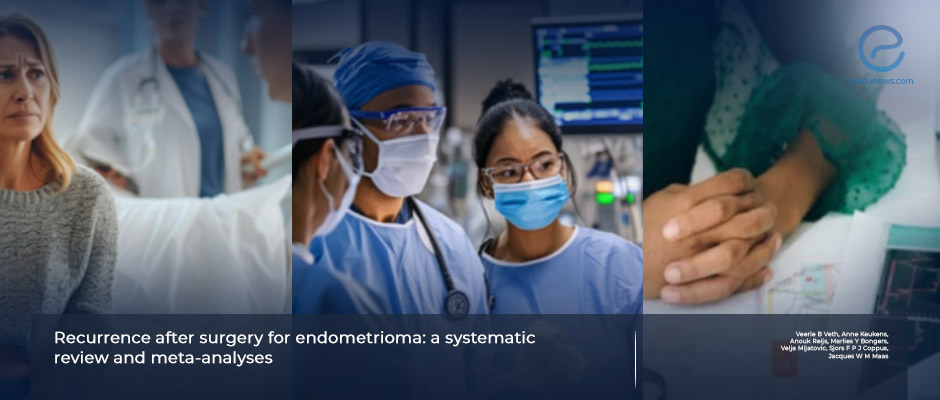
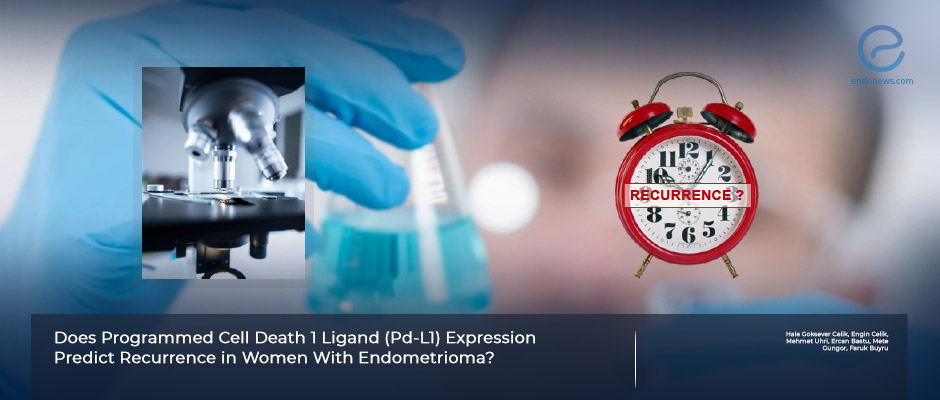
 By Hale Goksever Celik
By Hale Goksever Celik
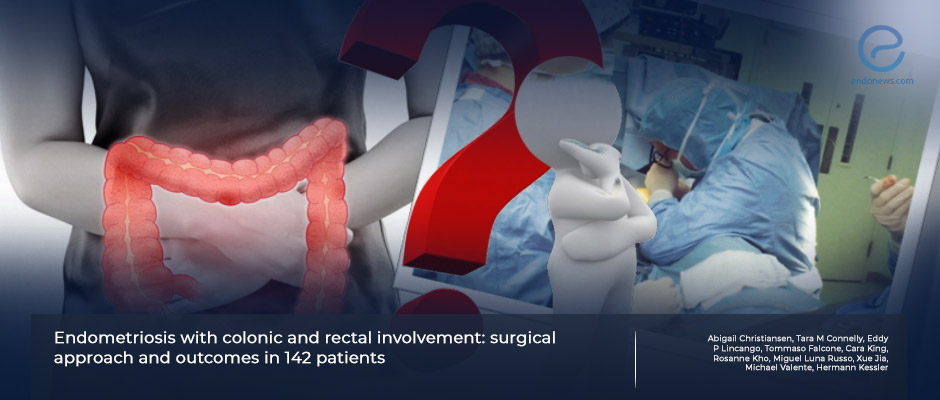




 By Özge Özkaya
By Özge Özkaya


 By Nasuhi Engin Aydin
By Nasuhi Engin Aydin
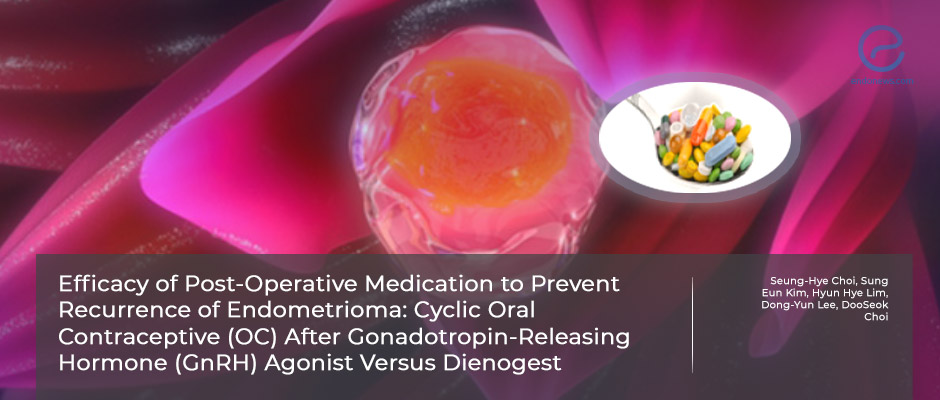
 By Bahar Yuksel
By Bahar Yuksel


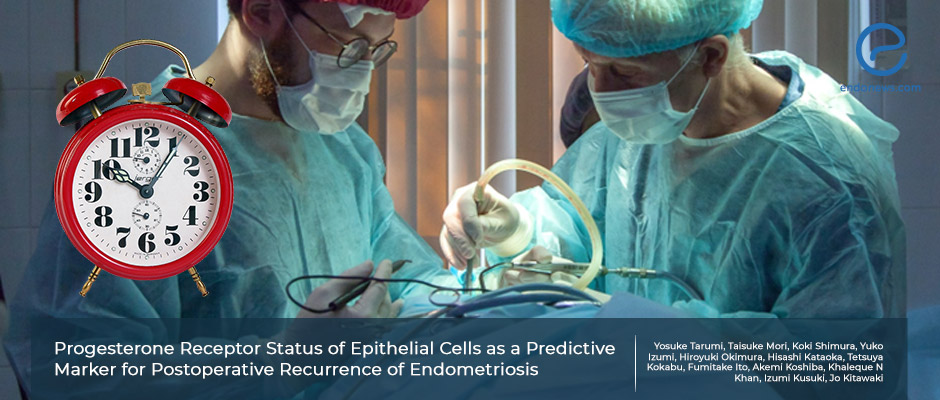
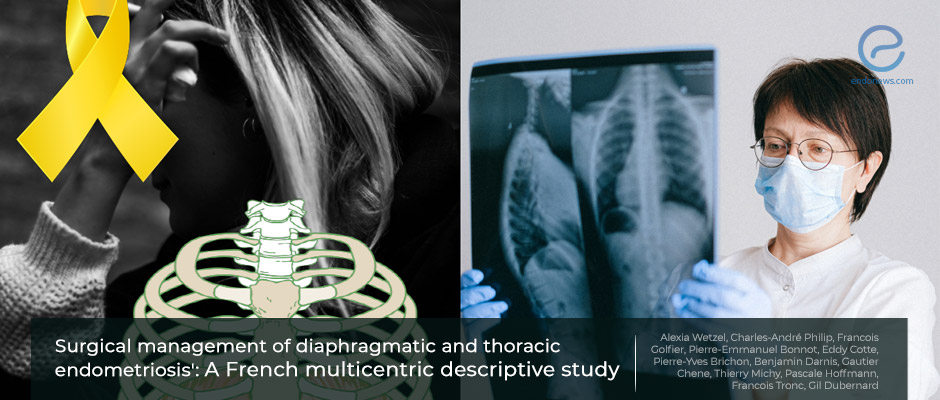










 By Yu Yu
By Yu Yu


 By Nadire Duru
By Nadire Duru






 By Timur Seckin
By Timur Seckin











 By Kasthuri Nair
By Kasthuri Nair


